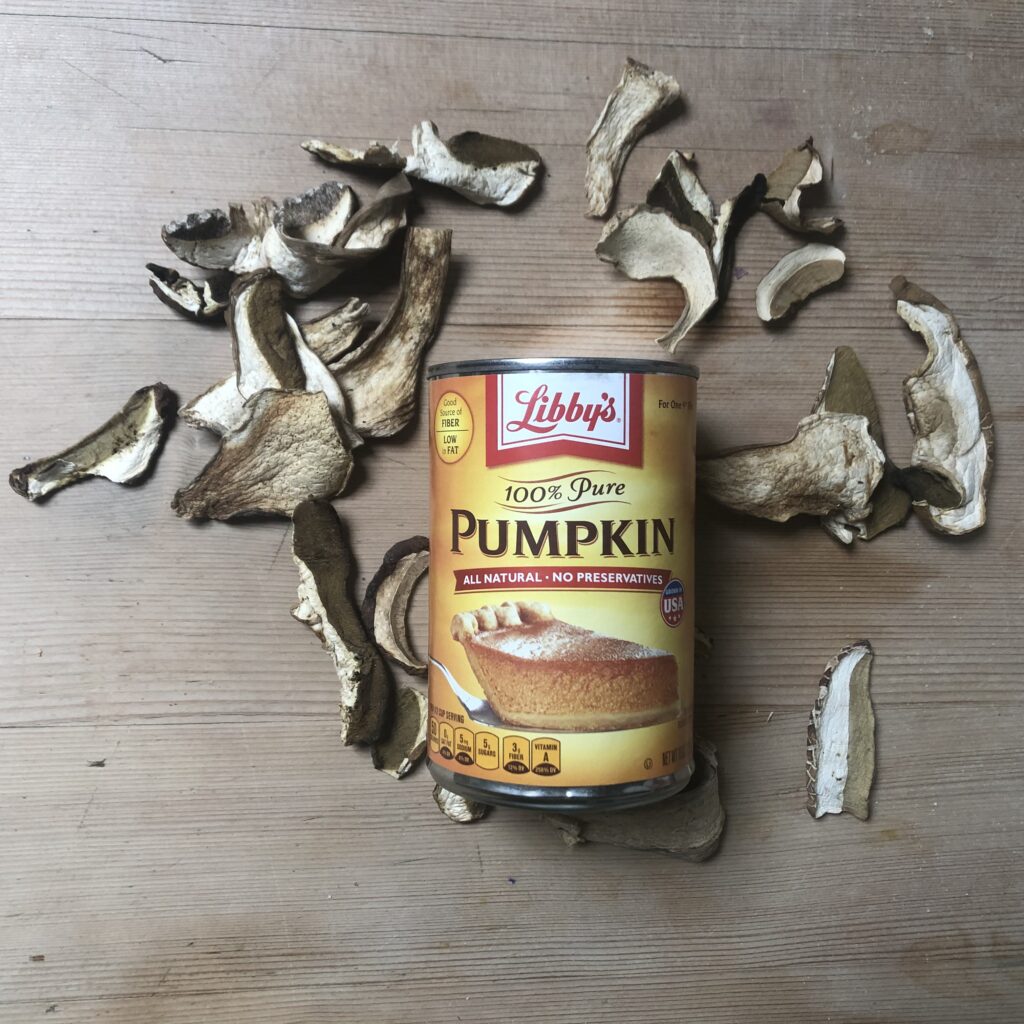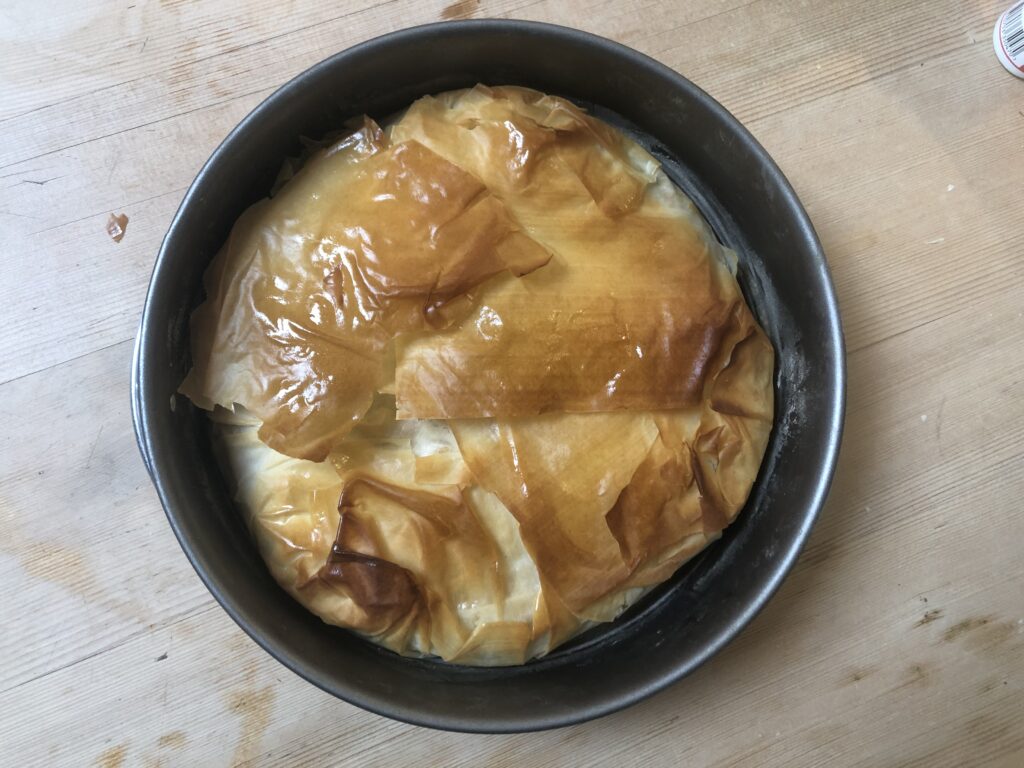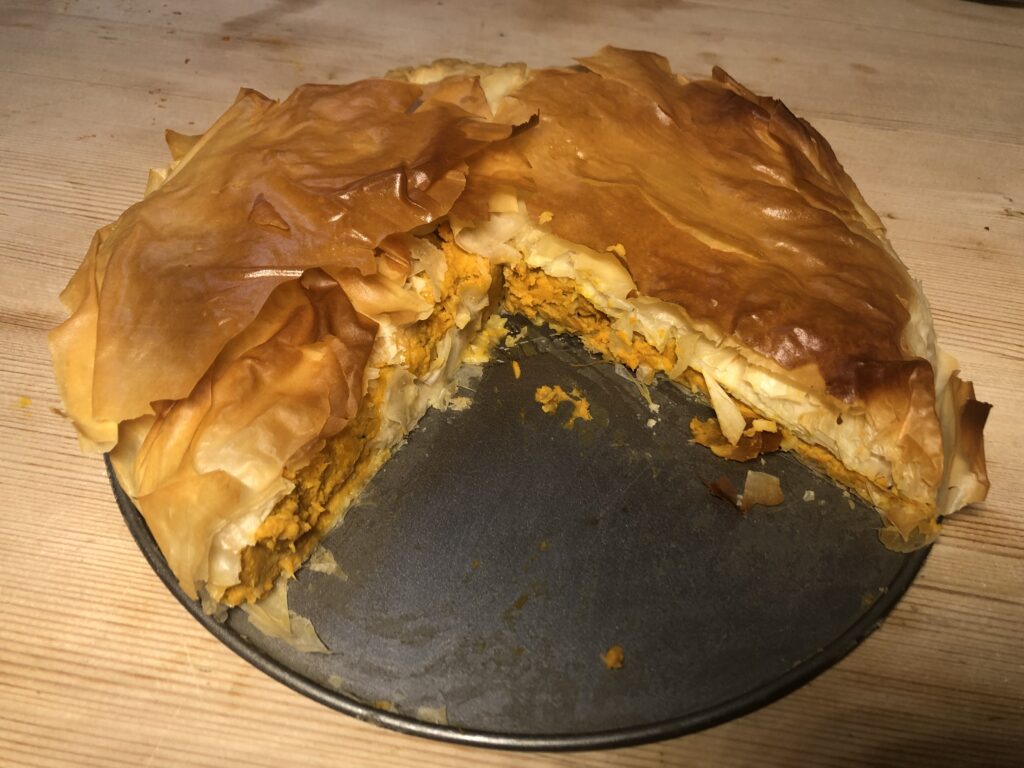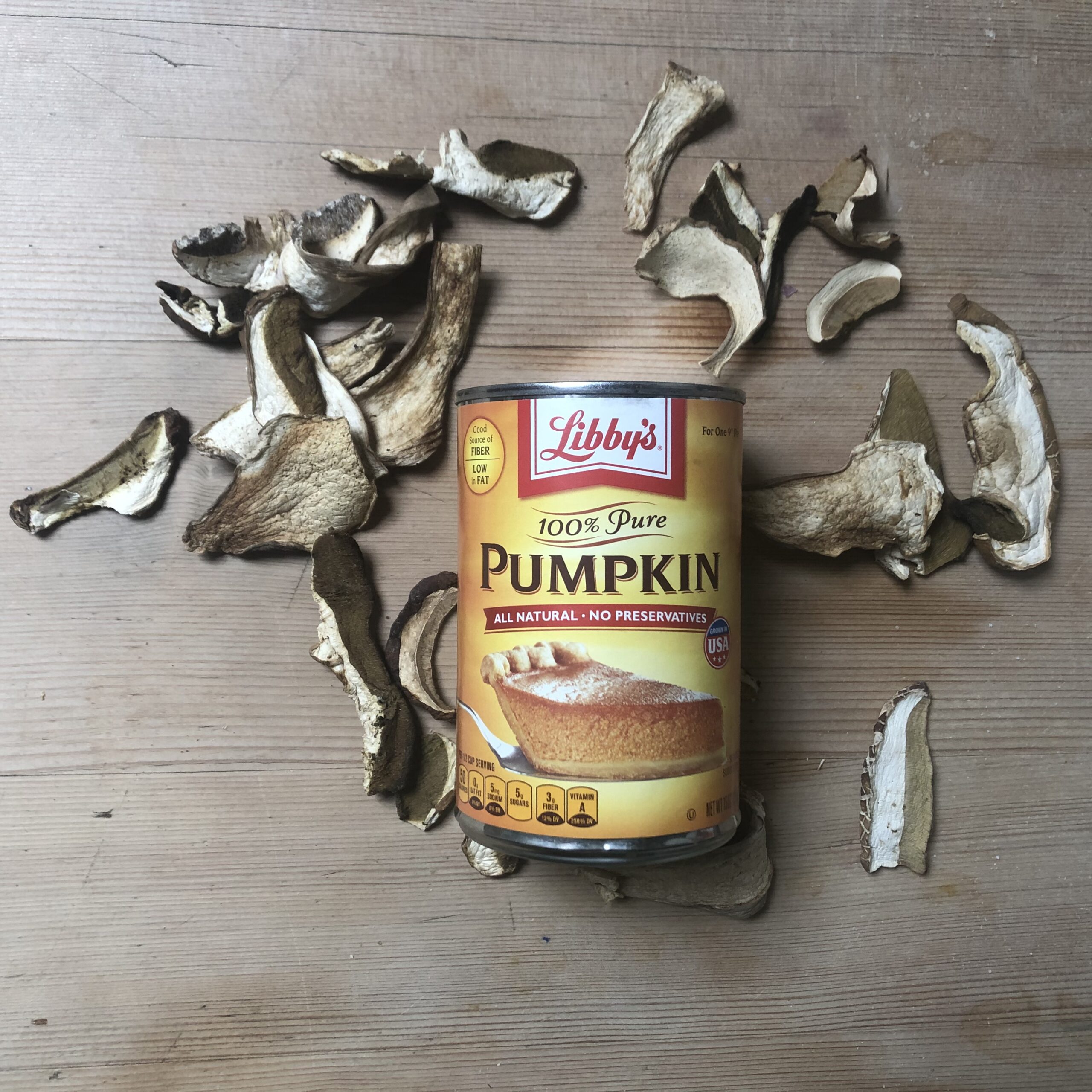A savory winter squash pie

September 20, 2020
It is 6:00 AM and the rain has stopped. Clouds the color of oysters bring relief after weeks of sun. Too wet and too dark, the village refuses to stir.
I look over my garden wall at Bruna’s olive grove and notice that the silver leafed trees have been pruned to half their size. A carpet of weeds covers the slope. Despite the shadows, dozens of yellow flowers gleam through the grass.
Butternut squash blooms are the shape of starfish. I ask Bruna later what she intends to do with her bounty and she replies, “Ravioli and pies. What else?” At eighty-three, she can still wield a knife.
Back in Zurich, I shy away from the gourd on the supermarket shelf. The thought of gaining entry with a blade, extracting strings and seeds, chopping, roasting, draining, then finally mashing it reminds me of the twelve stations of the cross. I reach for a can of Libby’s pumpkin purée instead…
In the fall, the shops in Liguria that sell focacce and vegetable pies make a delicious version with “zucca”, meaning pumpkin. The Italians talk about pumpkins, but seldom cook the huge ones, as their consistency can be too watery and stringy. They use myriad variations of winter squash instead.
The recipe that I give you today is an experiment. I would like to know if a can of the American “pumpkin” purée will work as well as a fresh squash. Some European readers may be horrified by this idea, but Libby’s, the iconic brand used at Thanksgiving, contains nothing but their specially bred Dickinson squash. Surfing the Internet, I find countless articles discussing the benefits and pitfalls of using either fresh or canned. Taste is personal. The general consensus does lean towards the latter, at least for the sweet American dessert, because it guarantees a compact, smooth consistency, with no danger of moisture seeping into the crust. In a few weeks, I will post a version made from scratch and compare the results.
The Ligurian torta di zucca always contains egg and parmesan, and sometimes a little prescinsêua or ricotta. To make a substitute for the prescinsêua, you can mix equal amounts of Greek yogurt and ricotta. Use whatever you have. A little fresh, mild sheep cheese also works well. I have never tried the versions with porcini and am curious how it will taste. The few leaves of fresh marjoram slipped into the filling add a warm, slightly sharp note. Be aware that too much will taste bitter. If you cannot find any, I would suggest thyme leaves instead of oregano. The original olive oil crust, as thin as parchment, is light and healthy. Anna del Conte, the renowned food writer from the UK, uses phyllo dough as a shortcut and that is good enough for me.
La Torta di Zucca
The Ingredients
20 grams dried porcini (0.70 ounces)
4 tbsp olive oil
1 small yellow onion
1.5 cans Libby’s pumpkin purée
30 grams ricotta (1 ounce) and 30 grams Greek yogurt mixed together, or 60 grams mild, fresh sheep cheese (2 ounces)
1 egg
2 egg yolks
5 tbsp parmigiano
A few gratings of nutmeg
A few leaves of marjoram
4 to 6 large sheets phyllo dough
Approximately 4 tablespoons more olive oil to brush the phyllo leaves
The Method
Soak the porcini mushrooms in warm water to cover. This should take 15 to 30 minutes, depending on their age.
In a casserole, gently sauté the onion in the olive oil.
Take the casserole off the flame and let the onions cool.
Add the pumpkin, eggs and egg yolks, ricotta or fresh sheep cheese, parmigiana, nutmeg and marjoram to the pan. Mix well and add salt and pepper to taste.
Once the porcini mushrooms are soft, lift them out of the water, rinse them in a colander to remove any grit, then chop them into small pieces and add to the squash mixture. Check the seasoning one last time.
Preheat the oven to 180° C, 350 °F
TO ASSEMBLE THE CRUST
Lightly oil a 26 centimeter (10-inch) spring-clip baking pan. Sprinkle with a few tablespoons of flour and shake away the excess.
Pour some olive oil (approx. 4 tablespoons) into a small bowl and make sure a pastry brush is handy. You will need to work quickly, as filo dough tends to dry out and become brittle in no time.
Open the phyllo dough package and lay the stack of leaves out flat. Brush the thinnest coat of olive oil over the leaf on the top of the stack, then lay it over the bottom of the pan, allowing the ends to hang down over the rim. Brush the second sheet with oil, then lay it across the previous one so that the sides of the pan are covered all the way around. Repeat this process with 4 to 6 more sheets.
Fill the pan with the squash mixture. Fold the overhanging pieces of phyllo back over the top, one at a time, as if wrapping a gift. Lightly brush with more olive oil. The Ligurians often leave a little bald patch in the middle, but I prefer to cover the entire top with a few more filo sheets in a decorative manner. Brush lightly with oil as well, so that they do not burn.
Bake for 30 to 45, minutes, or until golden.


Conclusion: We liked this, and it was relatively easy to put together. The squash did not leak into the crust. I am not 100 per cent sure that I am sold on the taste of the porcini. When I make it from scratch, I will leave it out.

